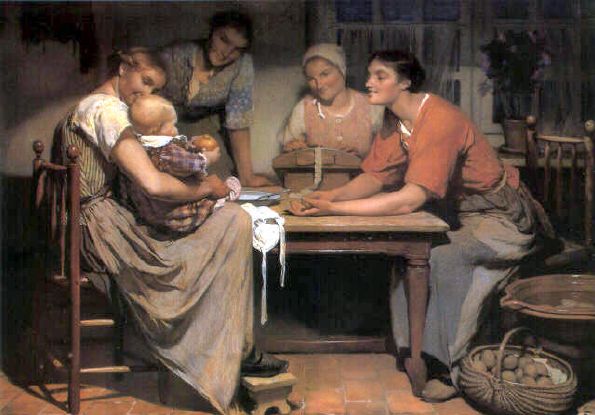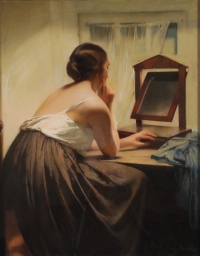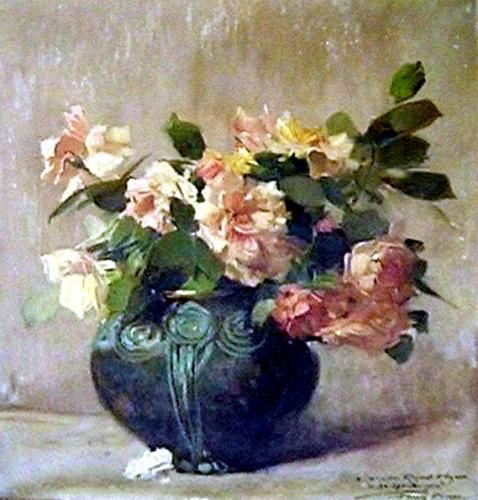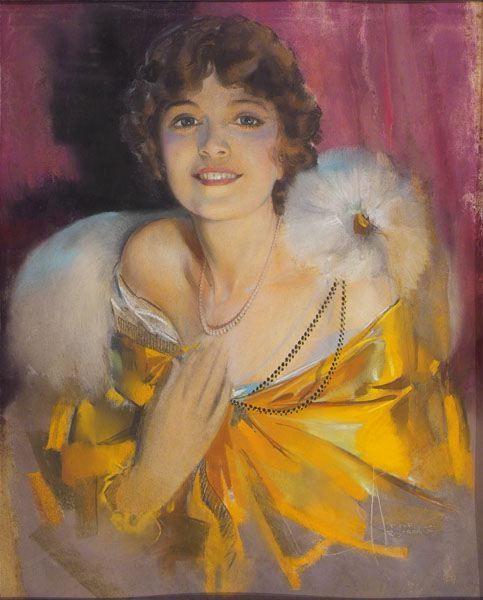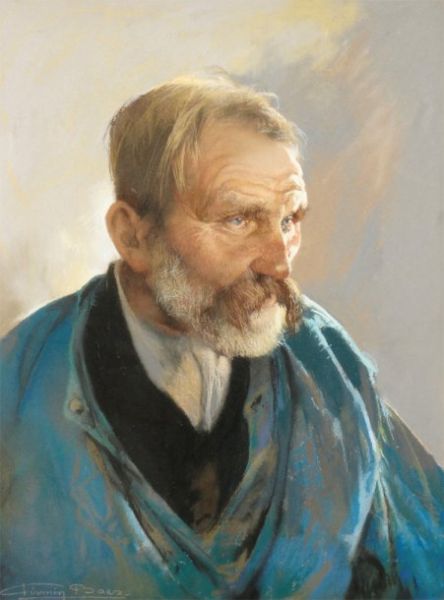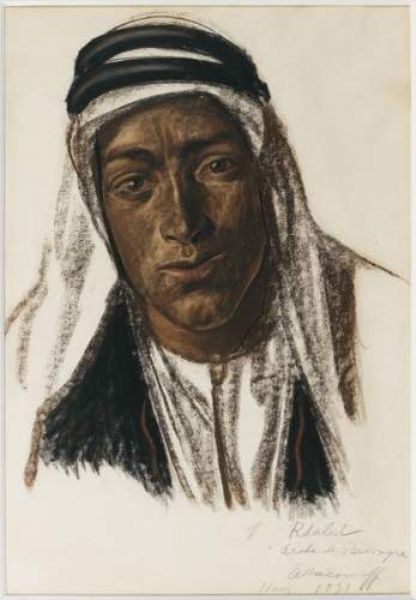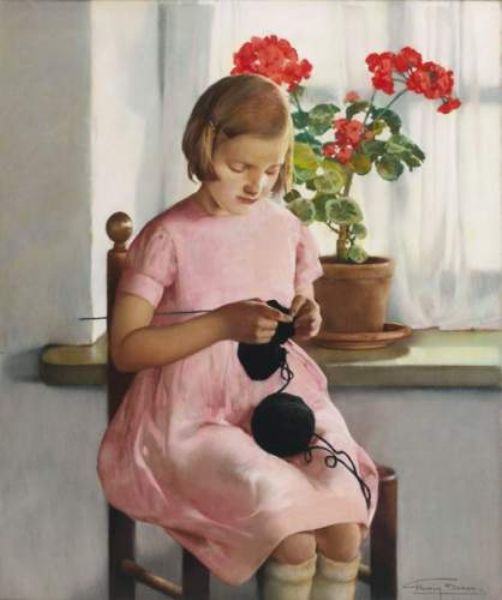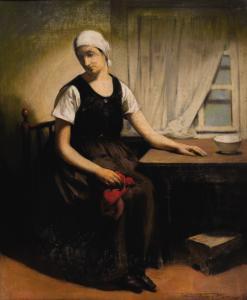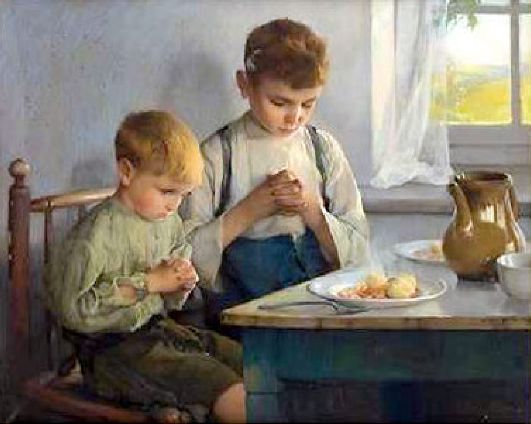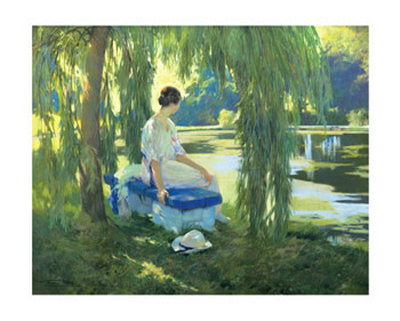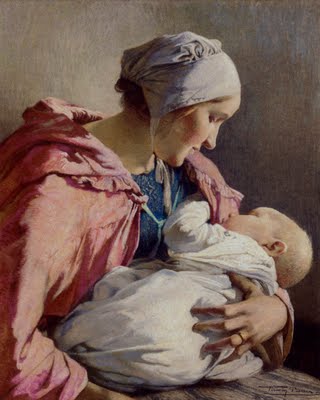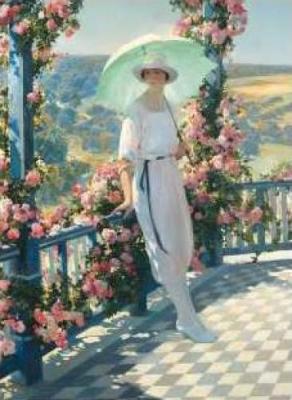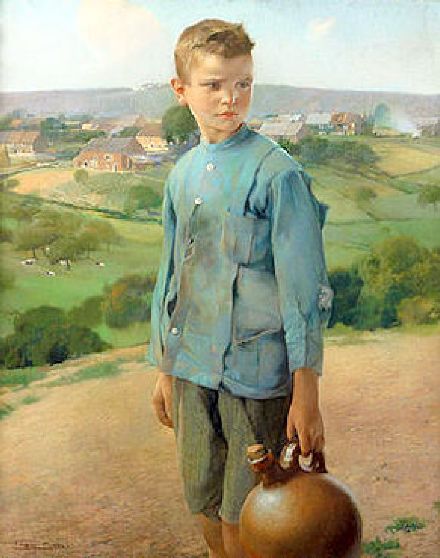<Back to Index>
- Economist David Ricardo, 1772
- Painter Firmin Baes, 1874
- Chancellor of France Michel Le Tellier, 1603
PAGE SPONSOR
Baes was born as the son of Henri Baes, a decorative painter and teacher at the Brussels Academy, and Héloïse Boly. He had two sisters, Alice and Irma. The latter married the painter Frank Holder. Firmin Baes grew up in an artistic environment: his grandfather was a framer and print dealer, an uncle, Emile, was a decorator, anh his father, who sometimes worked closely with his uncle Emile, decorated various objects, including the mail boats on the lines Ostend - Dover and Antwerp - Congo. He also painted the decorative panels for the café Metropole in Brussels and made decorations in theaters, castles and mansions. He also provided many decorations for festivities, including the one celebrating the 50th anniversary of independence in 1880. Baes uncles, Jean, Charles and Pierre, were respectively an architect and a glassmaker and industrial craftsman. From a very early age, he showed a talent for drawing and music. Later he left the latter in favor of the former. Baes already worked with his father's team on several assignments, including the decoration of restaurants with landscape paintings. His first influence came from painter Léon Frédéric, who occasionally collaborated with his father on decoration assignments.
He studied at the Academy in Brussels from 1888 to 1894, after which he enrolled in a private academy, "La Patte de Dindon", located above a pub with the same name on the Grand Place. There he studied further under Laermans Eugène, Jean Laudy , Emile Fabry and Victor Rousseau. His earliest works are in the style of Frederic Leon - a colorful and pictorial realism: Woman with clover , Return of the Prodigal Son, Archers, The Road, The Sower , etc.
Baes encountered success from the very beginning. In 1897 he took part in the prestigious Godecharlewedstrijd with the Return of the Prodigal Son.
From 1898 Baes was a member of the art society Pour l'Art , and a regular participant in the salons of this union. Pour l'Art was created in 1892 as a protest by some members within the group L'Essor, who rebeled against the older members of Essor because in their view the group no longer evolved. Other members of Pour l'Art included Peter Braecke, Albert Ciamberlani, Omer Coppens, Leon Dardenne, Jean Delville , Joseph-Henri Dierickx, Omer Dierickx, Emile Fabry, Georges Fichefet, Adolphe Hamesse, Hannotiau Alexandre, Jean-Marie Herain, William Jelley, George Morren, Victor Rousseau, Henri Ottevaere and Amédée Lynen. For the 21th Salon Pour l'Art in 1913 he designed a poster. Baes eagerly took part in drawing walks, cultural visits and tours of the association. For example, he went to the valley of the Sambre, but also to Germany and Switzerland. His view of the splendor of Borromean Islands was a result of this traveling.
In 1899 - 1900 he worked with his father on two prestigious decoration assignments in Brussels, the restaurant and the Hotel Continental. Meanwhile, he was also awarded his first prizes: bronze in the 1900 Exposition Universelle in Paris for Archers, bronze in the 1904 World's Fair in St. Louis in the United States of America.
After 1900 he switched to the pastel drawing, a technique which he considered equivalent to oil paintings. He developed and perfected its own pastel-on-canvas technique, which is notable for the high degree of reality in the design and virtuosity of coloration.
Firmin Baes married in 1902 Mary Nelis, and they had three daughters. Suzanne, Marguerite and Georgette.
The Museum of Ostend was the first institution to buy one of his works in 1907: The child (destroyed 1940). Ixelles followed in 1912 with the purchase of Reaper. Then came that of Brussels in 1913with Maternity, then Brugge with the maid and Antwerp with Pont l'Abbe in Brittany. The following year Queen Elizabeth bought The geranium.
Baes, now financially successful, in 1910
built a house at 166 Avenue Moliere in Brussels, and in 1914 a villa
"Le Chenois" in Faulx-les-Tombes. He decorated the houses himself with numerous scenes of country life. Before he owned the villa, he rented a summer cottage or a castle in Faulx in Wierde.
The interwar period was time for some magnificent projects: the creation of a Belgian memorial for the Musée des Invalides in Paris (1920 - 1921), his appointment as an officer of the Crown (1823), Officer de l'Instruction Public (a French award granted in 1930), the purchase of two of his works by the King of Siam (1926), the order of 12 large drawings under the title Le Brabant devaste the province of Brabant, for the decoration of the county chamber (1933), the decoration of the pavilion of the province of Brabant in the Exhibition of 1935 in Brussels, the decoration of an organ room in the villa of a friend in Biel / Bienne In Switzerland, the realization of the "Villa chez nous on the coast, intended as accommodation for artists (an initiative of the Fondation Meyer).
He died in Brussels on December 4, 1943.

